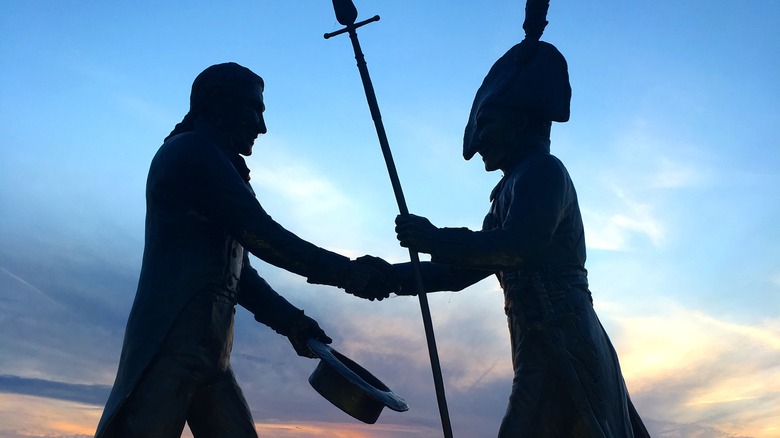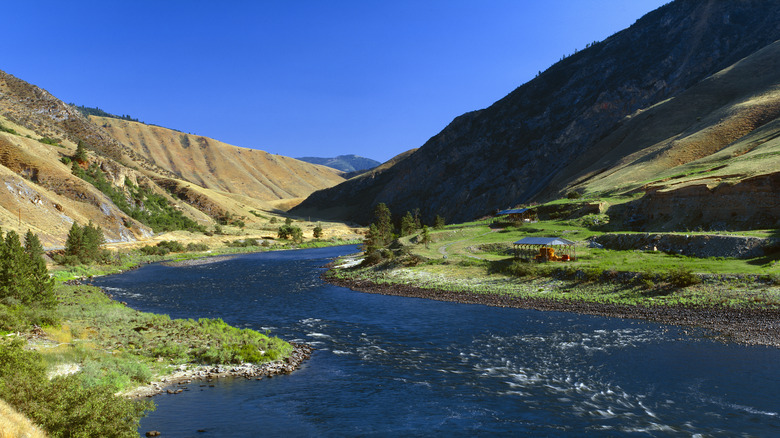Why The Spanish Sent Soldiers After The Lewis And Clark Expedition
At the dawn of the 19th century, the United States had just bought enough real estate to nearly double its size. With the signing of the Louisiana Purchase in 1803, President Thomas Jefferson bought over 800,000 square miles of land west of the Mississippi River from France at only three cents an acre. However, as National Geographic notes, now that he had the land, he had to know what was on it. For that task, he appointed his personal secretary Captain Meriwether Lewis. Lewis then recommended the expedition be co-led by his fellow army officer Captain William Clark.
The famed Lewis and Clark expedition set out west in the spring of 1804 and returned in late 1806 with a wealth of new information about the landscape, people, plants, and animals they found along the way. However, if the Spanish had gotten their way, Lewis and Clark would never have accomplished the goal they'd been tasked with. At one point in their journey, Spain — who still owned much of what now makes up the southwest United States — sent members of its own military up into the uncharted territories of the northwest to try and stop the expedition. But why? Let's take a look back to the days of the United States' life as a fledgling nation and see.
Spain didn't want the United States to continue expanding into its territory
The Louisiana Purchase gave Spain reason to be nervous. It was the first step in what the young country (the United States was not even 30 years old yet) would go on to call its ideal of Manifest Destiny, its perceived divine right to go take whatever it wanted wherever it wanted. According to History.com, Spain feared that after sufficiently exploring the northwest and finding a water route to the Pacific Ocean, the United States would then turn its attention to Spanish-owned territory in what is now the southwest, which had a significant amount of gold deposits. Spain was correct, of course, but the United States would end up getting that part of the country from Mexico rather than Spain.
The Spanish had a spy in the U.S. Army, General James Wilkinson, and on his advice, they sent four regiments of soldiers and Comanche tribesmen after the Lewis and Clark expedition in hopes of arresting them and putting the kibosh on their mission. But the American West is a big place, and the search parties ended up coming back empty-handed. The Lewis and Clark expedition made it back to Missouri in September 1806. Spain soon lost its territories in Mexico's fight for independence, and the United States purchased the southwest from Mexico as per the terms of the end of the Mexican-American War.

